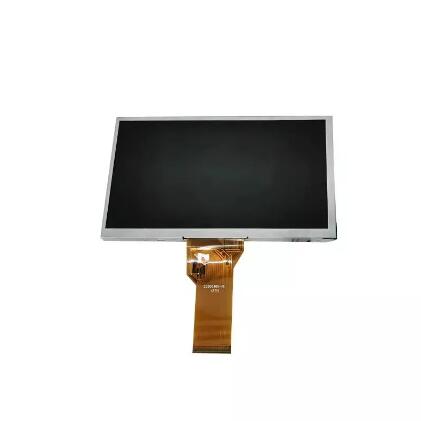The Evolution of Industrial Control LCDs: From Basic Displays to Advanced Interfaces
2024-08-30
Industrial Control LCDs have come a long way from their early days as basic display screens. Today, they are sophisticated interfaces that play a crucial role in modern industrial systems. As technology continues to advance, so too do the capabilities of these displays. In this blog, we’ll explore the evolution of Industrial Control LCDs, from their origins to the cutting-edge technologies that are shaping their future.
The Early Days of Industrial Control Displays
In the early days of industrial automation, control systems relied heavily on analog instruments and basic digital displays. These early displays were limited in their functionality, often showing only simple numeric readouts or basic graphical representations. While these displays served their purpose, they lacked the versatility and interactivity needed for more complex industrial applications.
The Shift to LCD Technology
The introduction of Liquid Crystal Display (LCD) technology marked a significant shift in industrial control systems. LCDs offered several advantages over traditional display technologies, including:
1. Improved Clarity and Resolution: LCDs provided clearer and more detailed displays, which were crucial for monitoring complex processes and presenting data in a more understandable format.
2. Energy Efficiency: LCDs consume less power than older display technologies, making them more suitable for continuous operation in industrial settings.
3. Compact Design: The slim profile of LCDs allowed for more compact control panels and the integration of displays into a wider range of equipment.
4. Enhanced Durability: Advances in materials and manufacturing techniques led to the development of ruggedized LCDs, capable of withstanding the harsh conditions often found in industrial environments.
The Rise of Touchscreen Technology
One of the most significant advancements in Industrial Control LCDs has been the integration of touchscreen technology. This innovation transformed these displays from passive screens to interactive control interfaces. Touchscreen Industrial Control LCDs offer several benefits:
1. User-Friendly Interface: Touchscreens provide a more intuitive interface, allowing operators to interact directly with the display. This reduces the need for external controls and makes it easier to manage complex systems.
2. Space-Saving Design: By integrating control functions into the display, touchscreen LCDs reduce the need for additional buttons, dials, and switches, saving space on control panels.
3. Customizable Controls: The ability to customize touchscreen interfaces means that operators can tailor the display to their specific needs, improving efficiency and reducing the likelihood of errors.
Advanced Features and Connectivity
Modern Industrial Control LCDs are equipped with a range of advanced features that enhance their functionality:
1. Multi-Touch Capabilities: Many industrial touchscreen LCDs now support multi-touch gestures, allowing operators to perform complex tasks with ease, such as zooming in on data or navigating through multiple screens.
2. High-Resolution Displays: As the resolution of LCDs continues to improve, these displays can now show intricate details, making them ideal for applications that require precision, such as in medical equipment or fine manufacturing processes.
3. Connectivity and Integration: Industrial Control LCDs are increasingly being designed with connectivity in mind. They can be integrated into larger control systems, allowing for remote monitoring and control via networks or the cloud. This is particularly useful in industries where centralized control and data collection are vital.
4. Durability Enhancements: Continued advancements in materials science have led to even more durable LCDs that can resist impacts, scratches, and chemical exposure, ensuring long-term reliability in demanding environments.
Looking to the Future
The future of Industrial Control LCDs is bright, with ongoing research and development leading to even more innovative solutions. Emerging technologies like flexible displays, augmented reality (AR) integration, and advanced AI-driven interfaces are set to redefine what Industrial Control LCDs can do. As industries continue to push the boundaries of automation and control, these displays will remain at the forefront, providing the interface between human operators and complex systems.
Conclusion
The evolution of Industrial Control LCDs reflects the broader trends in industrial automation and control. From basic numeric displays to advanced, interactive interfaces, these screens have become an integral part of modern industry. As technology continues to advance, we can expect Industrial Control LCDs to offer even greater functionality, durability, and connectivity, ensuring that they remain a vital tool in the industrial landscape.



